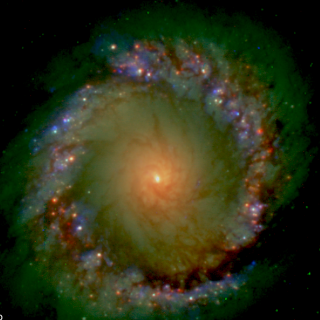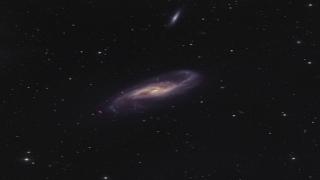Bibcode
Villarroel, Beatriz; Imaz, Iñigo; Lusso, Elisabeta; Comerón, Sébastien; Prieto, M. Almudena; Marziani, Paola; Mattsson, Lars
Bibliographical reference
Monthly Notices of the Royal Astronomical Society
Advertised on:
5
2020
Citations
1
Refereed citations
1
Description
A statistical study of intermediate Palomar Transient Factory supernovae (SNe) in Type 1 active galactic nuclei (AGNs) has shown a major deficit of supernovae around Type 1 AGN host galaxies, with respect to Type 2 AGN hosts. The aim of this work is to test whether there is any preference for Type 1 AGNs to host SN of a specific kind. Through the analysis of SN occurrence and their type (thermonuclear versus core-collapse), we can directly link the type of stars producing the SN events, thus this is an indirect way to study host galaxies in Type 1 AGNs. We examine the detection fractions of SNe, the host galaxies and compare the sample properties to typical host galaxies in the Open Supernova Catalog (OSC). The majority of the host galaxies in the AGN sample are late type, similar to typical galaxies hosting SN within the OSC. The findings are supportive of a deficiency of SNe near Type 1 AGNs, although we cannot with certainty assess the overall detection fractions of SNe in Type 1 AGNs relative to other SN host galaxies. We can state that Type 1 AGN has equal detection fractions of thermonuclear versus core-collapse SNe. However, we note the possibility of a higher detection rate of core-collapse supernovae in Type 1 AGN with insecure AGN classifications.
Related projects

The Central PARSEC of Galaxies using High Spatial Resolution Techniques
PARSEC is a multi-wavelength investigation of the central PARSEC of the nearest galaxies. We work on black-hole accretion and its most energetic manifestations: jets and hot spots, and on its circumnuclear environment conditions for star formation. We resort to the highest available angular resolution observations from gamma-rays to the centimetre
Almudena
Prieto Escudero

Spiral Galaxies: Evolution and Consequences
Our small group is well known and respected internationally for our innovative and important work on various aspects of the structure and evolution of nearby spiral galaxies. We primarily use observations at various wavelengths, exploiting synergies that allow us to answer the most pertinent questions relating to what the main properties of
Johan Hendrik
Knapen Koelstra